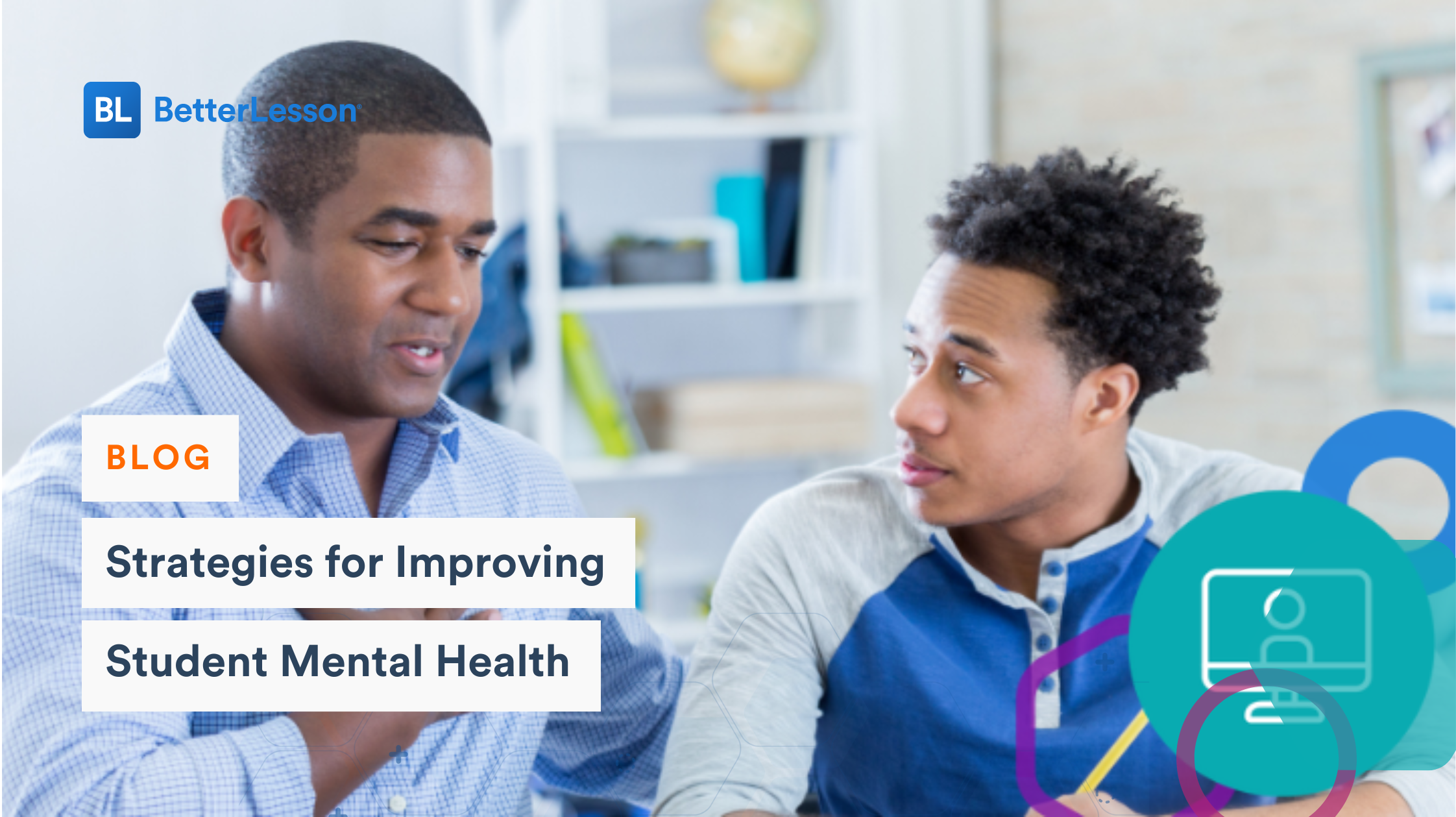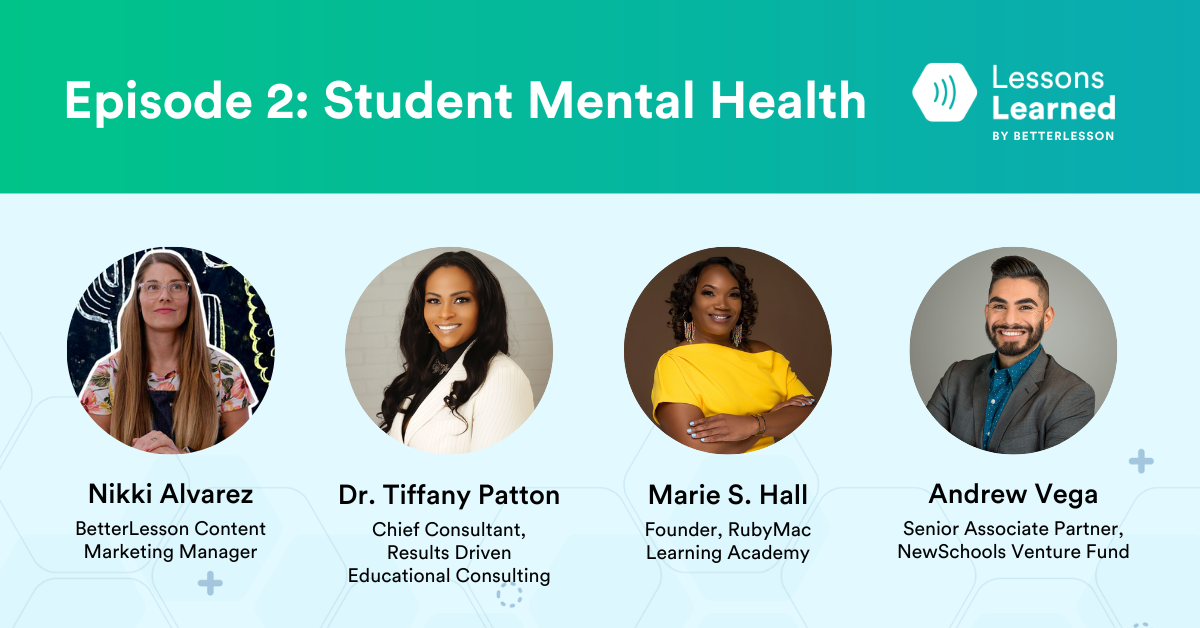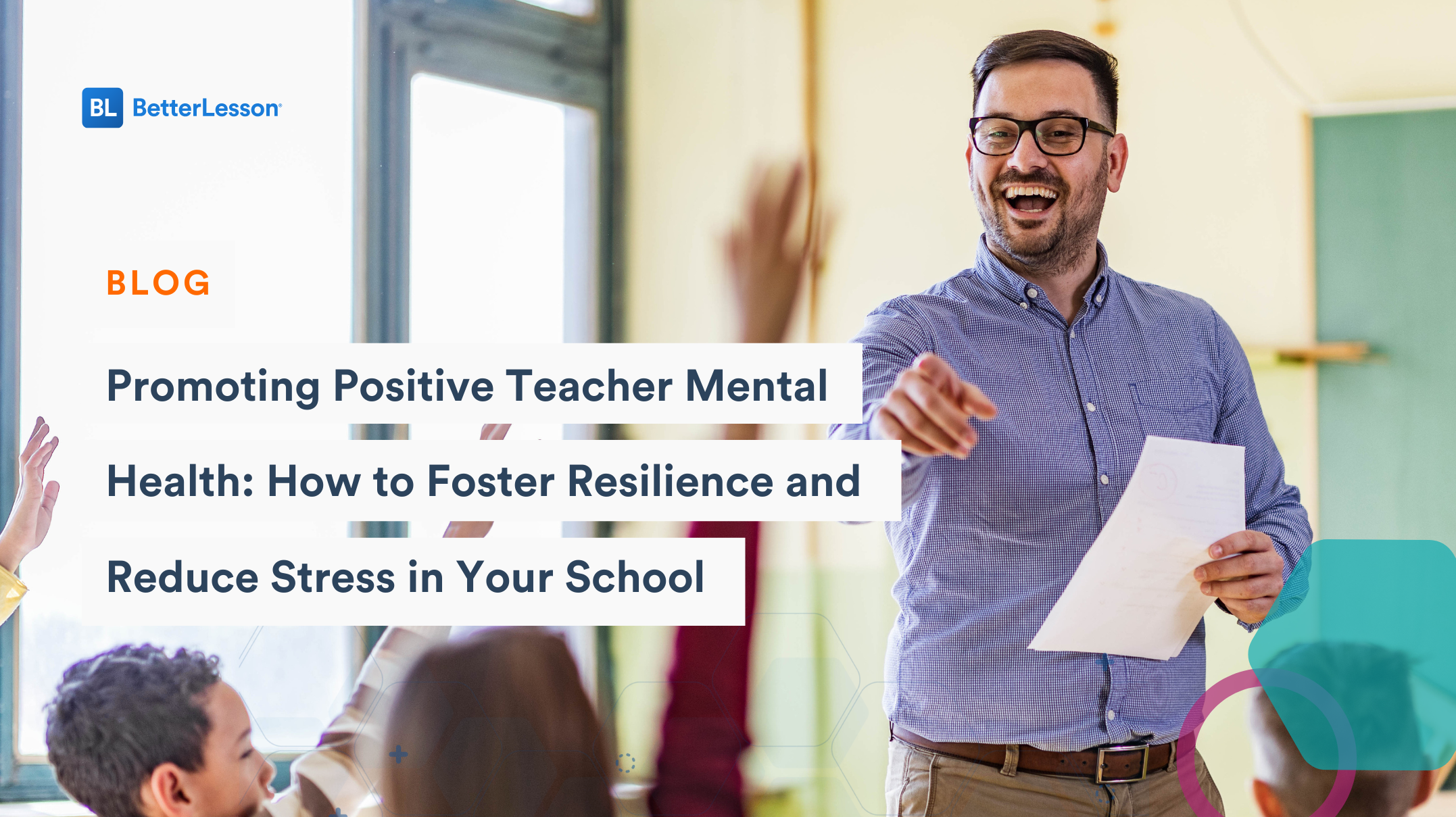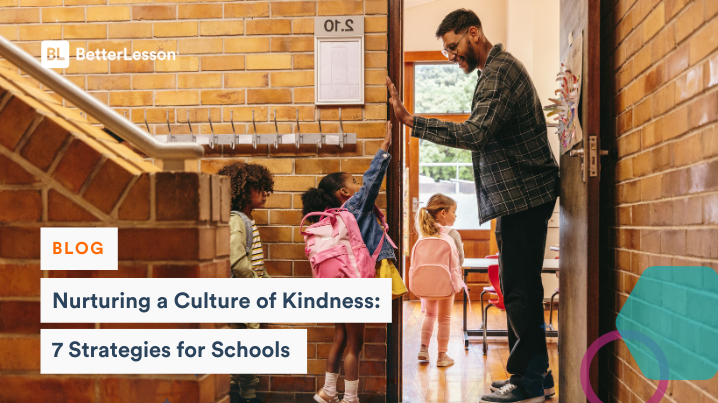Student mental health is a pressing issue in our schools. In October, during Mental Health Awareness Month, BetterLesson hosted a webinar to tackle the issue of student mental health: Resilient Schools: Strategies for Improving Student Mental Health.
In this blog post, we will breakdown the key take-aways from this webinar. From identifying mental health issues to making social-emotional services more accessible, this webinar offers tremendous insights for school leaders and educators seeking to address their students’ mental health with intentionality and fidelity.
Current State of Mental Health in our Schools
First and foremost, the mental health crisis in our schools predates the COVID-19 pandemic. Prior to 2020, the suicide rate among young people in the U.S. had been steadily rising for years. Of course, this became exacerbated during the pandemic: the death of families and friends from the virus, job loss and financial instability, isolation from online learning, and fear and anxiety about this unprecedented crisis are some of the factors that contributed to the worsening of students’ already declining mental health.
As a result of the pandemic, students also missed – due to virtual learning and subsequent COVID precaution – essential years of building social-emotional, relational, and coping skills that come from being in community with peers.
Since the onset of the pandemic, we’ve continued to be inundated with a disconcerting and worrisome 24-hour newscycle: political upheaval and violence, natural disasters and climate catastrophe, attacks on human rights.
No doubt, our students are growing up during an increasingly uncertain and scary landscape.
It stands to reason then that because students spend the majority of their days in school, we have a responsibility to address this serious need. But how do schools do this and where can they start?
How to Identify Mental Health Needs
Before schools can consider how to address students’ mental health needs, they need to have a clear understanding of the scope and specifics of those needs.
One way to identify needs is to develop a universal screening process. Universal screenings allow teachers and school leaders access to critical information about their students’ social, emotional, and mental health struggles and needs. These screenings can be as simple as a Google form that all students complete at the start of the school year. It’s important to note that these screeners – unless administered by a licensed mental health professional – are not intended to be used for clinical or diagnostic purposes. Rather, these screeners – with questions about topics like learning habits, social skills, general emotional dispositions – can be used to offer a baseline understanding of students’ social-emotional needs.
It is critical to address student mental health needs early, and such tools can help schools be proactive in responding to student needs and concerns.
**To see a list of some of the screening tools out there, as well as the ages served and details, look at Table 1 on Page 3 by the National Center on Safe Supportive Learning Environments. Download Resource**
Another approach to identifying mental health needs can be through observational data analysis. Oftentimes, schools carve out time during staff meetings and professional development sessions for teachers to analyze academic data and test scores. Similarly, schools can provide time and support for teachers to analyze observational student behavior data: which students seem to have lower frustration thresholds, which students seem more reluctant to follow directions, which students seem withdrawn, etc. Creating time for teachers to engage in this process of reflecting on student behavior can be an impactful step in identifying patterns of behaviors that can be indicative of mental, social, and emotional challenges.
Understanding the needs of our students is a necessary first step; however, from here, we need to be thoughtful and strategic in how we respond to this information.
How to Respond to Student Mental Health Needs
At a high-level, school counselors and in-house therapists are a critical component for students who have significant mental health needs. With that, it is important for schools to make counselors accessible for students by clearly communicating the process by which students can work with them. By talking openly about counseling support services, we also work towards destigmatizing and demystifying mental health support.
While this level of professional support is important, it’s necessary to be transparent about the landscape of mental health support in our schools. Across the country, the average counselor-to-student ratio is 408-to-1, despite the American School Counselor Association’s recommendation of 250-to-1. This requires concerted advocacy at the local, state, and national level to ensure that our schools have the resources to invest appropriately in mental health support services.
In the meantime, however, there are important opportunities for schools to fill in some of these gaps with school-level classroom shifts and collaborative teams, while continuing to be mindful of everyone’s capacity.
At the classroom level, school leaders can ensure that teachers and staff are aligned with both language used to describe student behavior and key classroom strategies to address concerns. Oftentimes, student behaviors are discussed almost exclusively through a disciplinary framework (X-student is being disruptive, therefore they need x-disciplinary response); when school leaders help develop a common language around behavior that is rooted in prioritizing care and identifying underlying causes, they can help create essential shifts in how teachers respond to behavior challenges, particularly those that may be traced back to mental, emotional, or social needs. In other words, teachers are not able to discipline mental health issues out of students. Instead, developing a language and a practice that tends to the underlying causes of behavioral challenges can be a transformative shift in how teachers support students’ needs.
Additionally, if teachers completed the aforementioned observational data analysis, they may identify patterns in student behavior (X-student becomes unruly during activities that require multi-step instructions). Identifying such patterns can help teachers understand how changes in their own instruction might support students’ mental health and emotional regulation.
At a building-wide level, schools can develop teams whose purpose is to address students’ mental health broadly. These teams – consisting of teachers, staff, leaders, and counselors – can look at school-wide behavioral data to help identify general trends, areas of persistent struggle, and possibly intervention strategies to support both students and teachers. These teams might also consider how to develop partnerships with local mental health agencies to increase the school’s capacity for support services. Ultimately, having a team who is committed and dedicated to creating and implementing support services and strategies is key to ensuring that this work doesn’t fall through the cracks.
Role of Social-Emotional Learning
Social-emotional learning (SEL) can play a key role in proactively addressing student mental health concerns. Such curricula can provide students with essential skills around identifying and regulating emotions that support positive mental health.
SEL curriculum and activities can also play an integral role in developing community connectedness. When schools focus solely on academics, students can end up feeling isolated, moving from class to class with little time to engage or connect with their peers. By focusing intentionally on community- and trust-building, schools can help combat feelings of loneliness and instead promote a sense of belonging and community.
It is important, however, for schools to approach SEL curriculum in the same ways they approach academic curriculum, with instructional coaching, feedback cycles, and support. With this level of support, teachers are able to feel confident in their delivery of SEL content and equipped to integrate these topics and practices into their lessons and student interactions.
Ensuring Accessible Mental Health Support
First – as previously mentioned – being clear and nonjudgmental about how students can access the school’s mental health support services is the first step in making them accessible.
Another layer of making mental health services open and accessible is by engaging with parents. If parents are hesitant, unclear, or concerned about their children receiving mental health support or engaging in SEL curriculum, this could become a barrier to students obtaining support.
School leaders have a responsibility to work directly with parents and caretakers to understand and address any concerns or fears they might have. Some leaders approach this through small groups focus where parents and caretakers are able both to express their apprehensions and to hear directly from school leaders. When parents/caretakers and school leaders are able to engage in open and constructive dialogue, we can work toward removing some of the stigma, shame, and fear around utilizing mental health services. In doing so, we may be increasing access to more students and we are building deeper relationships and connections with parents and caretakers, creating a stronger network of support for our students.
Supporting students’ mental health is a layered, complicated, and nuanced endeavor; it is also one that is necessary for our students’ wellbeing and success. BetterLesson is here to support – through instructional and executive coaching, learning walks, workshops, and thousands of on-demand courses and instructional resources – schools and districts in creating and implementing impactful school-wide SEL and mental health initiatives. Schedule a call with us today to learn more about how we can work together to support your students’ holistic success.
Get in Touch







